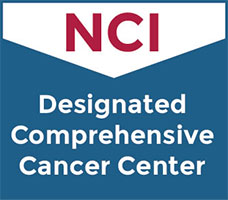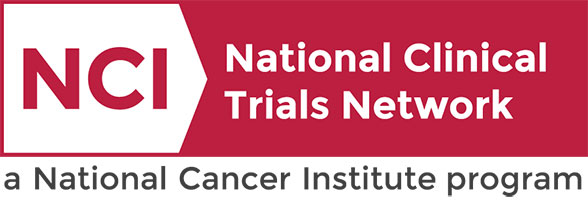Skip to main content
Endometrial Cancer
- Endometrial cancer is a disease in which malignant (cancer) cells form in the tissues of the endometrium.
- Obesity and having metabolic syndrome may increase the risk of endometrial cancer.
- Taking tamoxifen for breast cancer or taking estrogen alone (without progesterone) can increase the risk of endometrial cancer.
- Signs and symptoms of endometrial cancer include unusual vaginal bleeding or pain in the pelvis.
- Tests that examine the endometrium are used to diagnose endometrial cancer.
- Certain factors affect prognosis (chance of recovery) and treatment options.
Colon Cancer
- Colon cancer is a disease in which malignant (cancer) cells form in the tissues of the colon.
- Health history affects the risk of developing colon cancer.
- Signs of colon cancer include blood in the stool or a change in bowel habits.
- Tests that examine the colon and rectum are used to diagnose colon cancer.
- Certain factors affect prognosis (chance of recovery) and treatment options.
Cervical Cancer
- Cervical cancer is a disease in which malignant (cancer) cells form in the tissues of the cervix.
- Human papillomavirus (HPV) infection is the major risk factor for cervical cancer.
- There are usually no signs or symptoms of early cervical cancer but it can be detected early with regular check-ups.
- Signs and symptoms of cervical cancer include vaginal bleeding and pelvic pain.
- Tests that examine the cervix are used to diagnose cervical cancer.
- Certain factors affect prognosis (chance of recovery) and treatment options.
Carcinoma of Unknown Primary
- Carcinoma of unknown primary (CUP) is a rare disease in which malignant (cancer) cells are found in the body but the place the cancer began is not known.
- Sometimes the primary cancer is never found.
- The signs and symptoms of CUP are different, depending on where the cancer has spread in the body.
- Because the place where the cancer started is not known, many tests and procedures may be done to search for the primary cancer.
- If tests show there may be cancer, a biopsy is done.
- When the type of cancer cells or tissue removed is different from the type of cancer cells expected to be found, a diagnosis of CUP may be made.
- Tests and procedures used to find the primary cancer depend on where the cancer has spread.
- Certain factors affect prognosis (chance of recovery).
Gastrointestinal Carcinoid Tumors
- A gastrointestinal carcinoid tumor is cancer that forms in the lining of the gastrointestinal tract.
- Health history can affect the risk of gastrointestinal carcinoid tumors.
- Some gastrointestinal carcinoid tumors have no signs or symptoms in the early stages.
- Carcinoid syndrome may occur if the tumor spreads to the liver or other parts of the body.
- Imaging studies and tests that examine the blood and urine are used to diagnose gastrointestinal carcinoid tumors.
- Certain factors affect prognosis (chance of recovery) and treatment options.
Breast Cancer
- Breast cancer is a disease in which malignant (cancer) cells form in the tissues of the breast.
- A family history of breast cancer and other factors increase the risk of breast cancer.
- Breast cancer is sometimes caused by inherited gene mutations (changes).
- The use of certain medicines and other factors decrease the risk of breast cancer.
- Signs of breast cancer include a lump or change in the breast.
- Tests that examine the breasts are used to diagnose breast cancer.
- If cancer is found, tests are done to study the cancer cells.
- Certain factors affect prognosis (chance of recovery) and treatment options.
Bladder Cancer
- Bladder cancer is a disease in which malignant (cancer) cells form in the tissues of the bladder.
- Smoking can affect the risk of bladder cancer.
- Signs and symptoms of bladder cancer include blood in the urine and pain during urination.
- Tests that examine the urine and bladder are used to diagnose bladder cancer.
- Certain factors affect prognosis (chance of recovery) and treatment options.
Bile Duct Cancer (Cholangiocarcinoma)
- Bile duct cancer is a rare disease in which malignant (cancer) cells form in the bile ducts.
- Having colitis or certain liver diseases can increase the risk of bile duct cancer.
- Signs of bile duct cancer include jaundice and pain in the abdomen.
- Tests that examine the bile ducts and nearby organs are used to diagnose and stage bile duct cancer.
- Different procedures may be used to obtain a sample of tissue and diagnose bile duct cancer.
- Certain factors affect prognosis (chance of recovery) and treatment options.
Anal Cancer
- Anal cancer is a type of cancer that forms in the tissues of the anus.
- Most anal cancers are related to human papillomavirus (HPV) infection.
- Signs of anal cancer include bleeding from the anus or rectum or a lump near the anus.
- Tests that examine the rectum and anus are used to diagnose anal cancer.
- After anal cancer has been diagnosed, tests are done to find out if cancer cells have spread within the anus or to other parts of the body.
- Some people decide to get a second opinion.
- Certain factors affect the prognosis (chance of recovery) and treatment options.
Adrenocortical Carcinoma
- Adrenocortical carcinoma is a rare disease in which malignant (cancer) cells form in the outer layer of the adrenal gland.
- Having certain genetic conditions increases the risk of adrenocortical carcinoma.
- Symptoms of adrenocortical carcinoma include pain in the abdomen.
- Imaging studies and tests that examine the blood and urine are used to diagnose adrenocortical carcinoma.
- Certain factors affect the prognosis (chance of recovery) and treatment options.
Subscribe to


